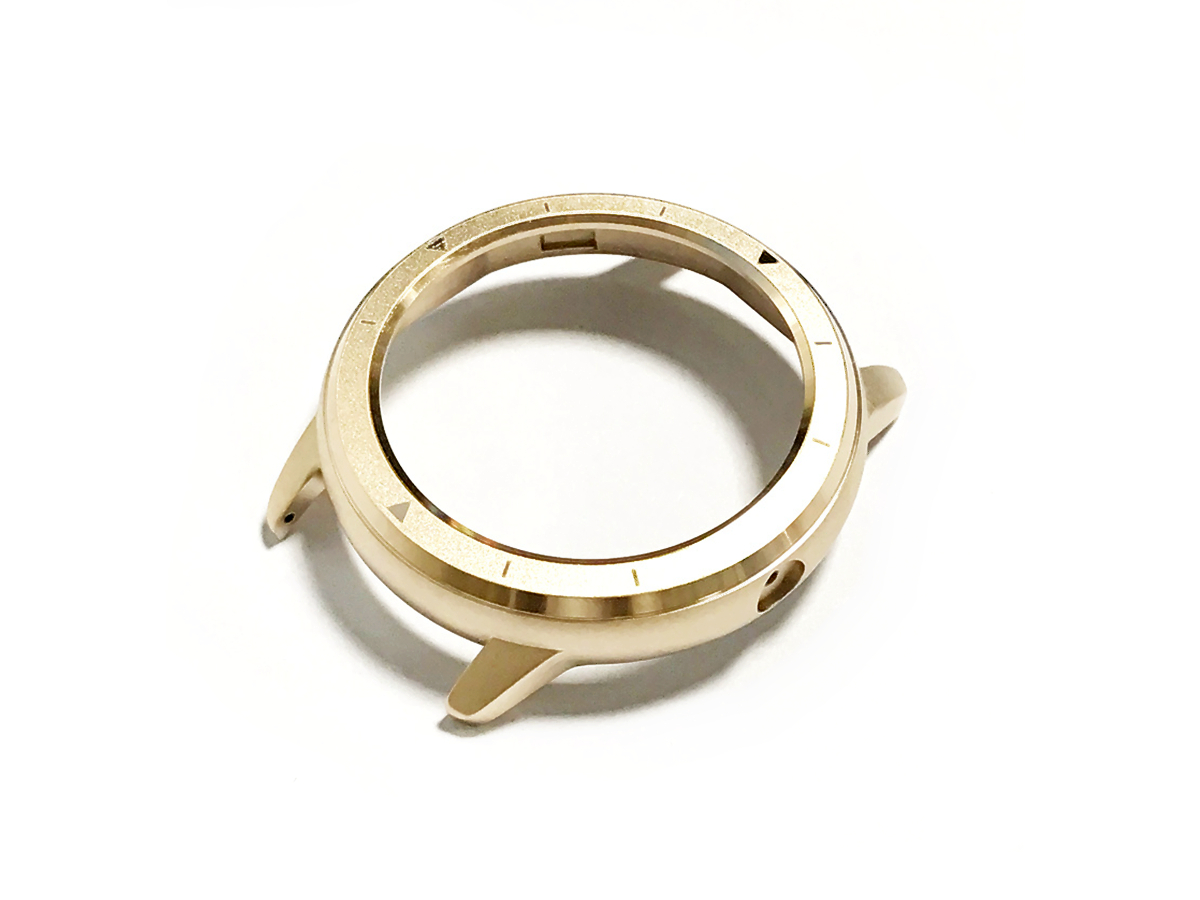Zinc Die Casting Watch Casing Components in High-End Consumer Devices
Introduction: Precision Craftsmanship for Luxury Timepieces
Zinc die casting elevates watchmaking through Zamak die casting, producing 0.25mm-thin case backs with ±0.02mm tolerances for luxury watches. The hot-chamber process ensures 18-second cycles, enabling mass production of intricate designs like tourbillon bezels and crown guards.
Using Zamak 5 with 320 MPa tensile strength, watch cases withstand 5ATM water pressure while weighing 25% less than stainless steel. Alloys like ZA-8 provide 0.6μΩ·m resistivity, ensuring uninterrupted connectivity in smartwatch GPS modules.
Precision Manufacturing for Watch Components
Step 1: Jewelry-Grade Mold Design Molds with 0.001mm surface finish replicate guilloché patterns and brand logos, optimized for Zamak alloys to eliminate post-machining.
Step 2: Micro-Detail Casting Zinc at 430°C fills 0.2mm lug gaps in 0.08 seconds via vacuum-assisted casting, achieving 99.5% density for helium escape valve housings.
Step 3: Ultra-Fine Finishing Diamond-cut CNC tools polish case edges to Ra 0.05μm, matching Swiss watchmaking standards.
Material Intelligence: Alloys for Horological Excellence
Alloy | Key Properties | Applications | Competitive Edge |
|---|---|---|---|
320 MPa strength, 1.2% elongation | Dive watch cases, Chronograph pushers | Survives 200m depth pressure | |
0.6μΩ·m resistivity, 120°C stability | Smartwatch antenna frames | 5G signal loss <0.1dB | |
99.99% purity, ISO 10993 certified | Luxury bracelet links | Hypoallergenic skin contact | |
400 MPa yield strength | Skeleton case backs | 50% higher rigidity vs Zamak 3 |
Expanded Applications:
Moonphase Complications: Zamak 5 enables 0.3mm-thin lunar disc housings.
Tourbillon Cages: ZA-8 reduces electromagnetic interference for precision movement stability.
Surface Engineering: Luxury Finishes for Watchmaking
PVD Coating
Function: PVD coatings apply 2-5μm rose gold/platinum layers.
Properties: Vickers 1,500 hardness, 500+ scratch test cycles
Applications: Dress watch bezels, Deployment clasps
Electropolishing
Function: Electropolishing ensures Ra 0.1μm finish on screw-down crowns.
Properties: Prevents thread galling, 60% lower friction
Applications: Water-resistant case backs, Crown stems
Nano-Ceramic Coating
Function: Ceramic coatings create anti-fingerprint surfaces.
Properties: 9H hardness, ΔE <0.3 after UV exposure
Applications: Smartwatch touchscreens, Exhibition case backs
Competitive Edge: Zinc vs Traditional Watch Materials
Material | Weight (g) | Cost/Unit | Corrosion Resistance | Machinability |
|---|---|---|---|---|
Zinc Alloy | 18 | $1.20 | 10/10 (saltwater) | 90/100 |
Stainless Steel | 42 | $4.50 | 9/10 | 60/100 |
Titanium | 22 | $8.00 | 10/10 | 40/100 |
Production Excellence: Solving Watchmaking Challenges
Challenge | Technical Solution | Performance Outcome |
|---|---|---|
Micro-Cracks in Thin Lugs | Vacuum-assisted casting reduces stress concentration by 70% | 0 fractures in 10k pressure cycles |
Crown Thread Wear | Zamak 5 + electropolishing achieves 50N·m torque resistance | Exceeds ISO 22810 standards |
Antenna Signal Blockage | ZA-8 alloy + laser-drilled signal windows | <0.2dB loss in LTE/5G bands |
Color Consistency | Spectrophotometer-controlled PVD chambers | ΔE <0.5 across batches |
Industry Applications: Redefining Watch Design
Mechanical Watches:
0.25mm-thin perpetual calendar modules
Anti-magnetic tourbillon cages (<15μT interference)
Smartwatches:
0.3mm ECG sensor housings with medical-grade seals
Wireless charging coils integrated into case backs
Luxury Hybrids:
18K gold-plated smart crowns
Skeletonized case backs with NFC antenna grids
Case Studies:
FAQs
Can Zamak alloys match stainless steel's scratch resistance?
How thin can zinc die cast walls be for skeleton watches?
Does PVD coating affect wireless charging in smartwatches?
What alloy prevents allergic reactions in watch bracelets?
How does zinc compare to titanium in marine environments?

